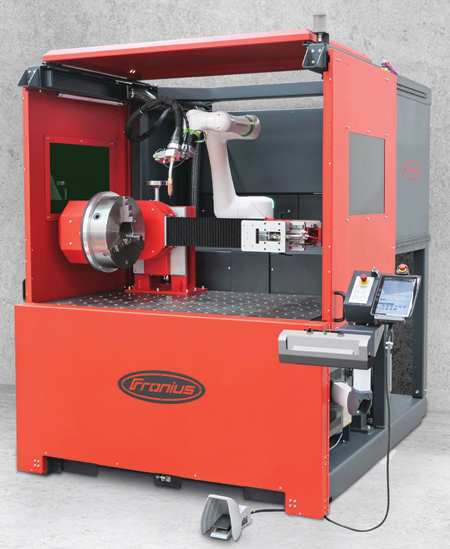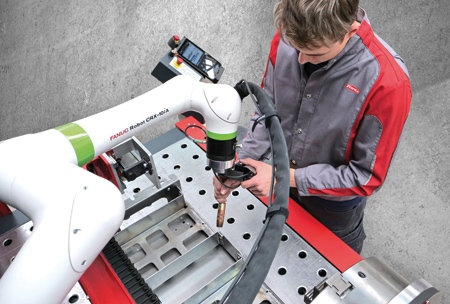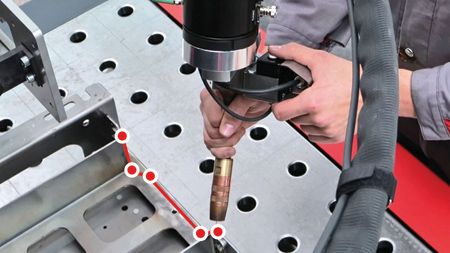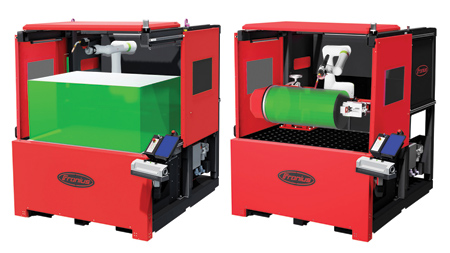
Consistent welding quality from start to finish with the compact Fronius CWC-S Cobot welding cell including rotary unit and optional tailstock.

No programming knowledge is required for teaching the cell-the programming steps are intuitive and easy to learn, allowing the welding specialist to concentrate on more challenging tasks.

The welding path is traced point by point on the component. The software then uses these key points to calculate the welding contours and welding sequence.

The following component geometries are possible in the CWC-S: cuboid 1,500 x 1,000 x 700 mm / cylindrical 860 x 450 mm
Although automated welding processes achieve significantly more consistent welding results, small and medium-sized businesses frequently still struggle with automation. High acquisition costs for welding robots and professional programming expertise are at odds with small batch sizes. "The CWC-S Cobot welding cell from Fronius provides a solution to this mismatch," said a Fronius spokesperson.
"Because of the precise torch movements with a repeatability of +/- 0.04 mm, weld reproducibility is guaranteed in the Cobot welding cell-even in series if necessary." Intelligent Fronius welding technology controls the welding process and records all welding data as required. The WeldCube data management software-optionally available with the welding cell- serves to store and evaluate the data.
"Programming a CWC-S is intuitive and can be quickly learned by any welding specialist. Components can even be loaded and welding programs started by trainees," explained Christian Neuhofer, Product Manager at Fronius Welding Automation.
The welding torch is manually guided to the starting points, position points and end points on the component and these are confirmed by pressing a button. The software uses this information to calculate the welding contours and welding sequence, while the required welding parameters can also be selected quickly using predefined characteristics. Motion commands such as "pendulum parameters" or "weld job" can be inserted by means of dragging and dropping on the touchscreen of the Cobot control.
Before starting the welding process, the operator can simulate the welding sequence once again to detect and correct possible interference contours. "Once the CWC-S is fully programmed, it welds component after component with consistent quality and at a regular speed," said the spokesperson.
The welding cell's standard equipment includes a FANUC Cobot CX10 iA with a reach of 1,249 mm and a payload of 10 kilograms, and a welding table with a working area of 1,500 x 1,000 x 700 mm. Operator safety is ensured by a pneumatic glare shield, sliding side doors with viewing windows and an extraction hood.
Users can choose between the tried-and-tested Fronius Welding Packages Standard, Pulse, LSC (Low Spatter Control), PMC (Pulse Multi Control) and CMT (Cold Metal Transfer) depending on the intended area of use, while the TPS 320i or TPS 400i welding systems are available for the Cobot, subject to the package selected.
The standard equipment can be supplemented with special starter packages or the user-friendly WeldConnect app. Further options include an extraction system, a rotary unit including tailstock or the option of crane loading.
For more information contact:
Fronius USA LLC
6797 Fronius Drive
Portage, IN 46368
219-734-5500
sales.usa@fronius.com
www.fronius.us